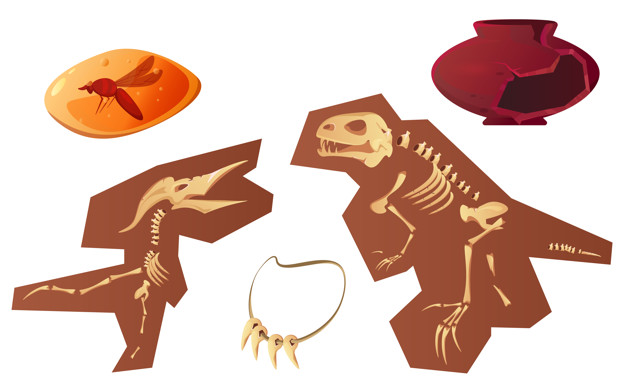
What Is Baltic Amber?
Baltic amber, born from ancient tree resin, underwent fossilization across millions of years in the depths of the earth, shaped by intense heat and pressure. Today, it's sourced from rocks or shoreline drifts. Though soft, amber has adorned jewelry, medicine, and perfumes since antiquity.
Baltic Amber, a scientific marvel, hosts fossilized plants and insects spanning over 40 million years! Discovering these bugs and plants, suspended in time, evokes awe. Most life forms within true fossil amber have long vanished, opening a portal to the captivating prehistoric world.
Enriched with succinic acid, Baltic amber harbors a naturally-occurring substance celebrated for its analgesic effects upon external application. Its suitability extends to pharmacy and cosmetics, devoid of heavy metal mixtures.
Treasured as a precious gem, amber is renowned for its healing properties. Linked to the sun's vitality, it exudes radiant positivity, enhanced by exposed settings that amplify its glow. Baltic amber, a fossilized resin produced by ancient pine trees in Northern Europe, is unparalleled in quality, its origin tracing back to southern Scandinavia and neighboring Baltic Sea regions. Warmer climates spurred abundant resin exudation, resulting in what scientists term a fossil pine resin, Baltic amber, achieved through oxidation. While over 125 fossil resin types exist worldwide, only Baltic amber and its relatives are notable. Despite their presence in Europe and America, Baltic amber remains the epitome of sought-after excellence.
Although often deemed a gem, amber is purely organic, originating from pine tree resin. Millennia ago, these resin-rich trees fell in the Baltic Sea's future expanse, carried by rivers to Lithuanian, Russian, and Polish coasts. Over time, trees and their resin caches entwined with sediment, evolving into solid, clear masses. While numerous amber deposits persist in oceans and earth, genuine Baltic amber thrives. Crafted into beads, jewelry, and ornaments for millennia, it's cherished for its immaculately preserved fossils, capturing life's hues and patterns. Warm to the touch and electrifying upon friction, it emits a pine aroma when burnt, buoyantly resting in saltwater while sinking in fresh water.
Recent posts
-
20 NovLithuanian Post temporarily suspends the delivery of parcels to Israel
-
30 OctAll Saints’ Day November 1
-
28 AugAmber Colors
-
28 AugBaltic Amber
-
14 AugAssumption Day August 15
-
05 JulStatehood Day July 6
-
02 AugAmber Formation
-
20 JulSeveral authenticity tests
-
13 AprGemstones
-
01 AprSize Chart












